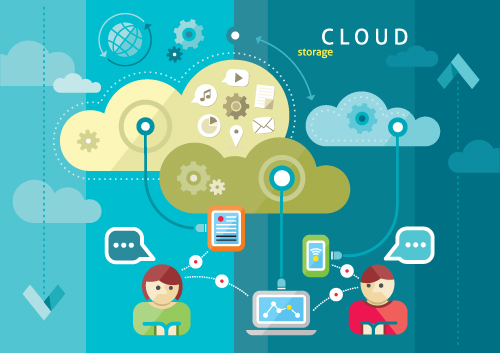End-User Value of Copyright in E-Content Services

The creation of value for customers is the main goal of service providers. Depending on the business, the customer can be an industrial customer or a consumer, which often is referred to as an end-user. In many businesses, firms and business networks compete against one another by aiming to create a superior end-user experience.
Service management scholars refer to the practice of subjecting organisational resources to serve the value creation processes of customers as the value-in-use approach. The approach suggests that economic value for a firm emerges when customers are able to create value for themselves by using the offerings of the firm in a manner that supports their everyday practices. The perceived value to a customer can take, for instance, economic, utilitarian, social and hedonic forms. Economic value refers to financial benefits that a product or service offers. Utilitarian value refers to the usability of the offering. Social value renders social recognition and hedonic value pleasure.
In the value-in-use approach, the role of service providers is to facilitate the value creation of their customers. A successful firm has deep knowledge of how and for what purposes its customers use its offerings. This information is used to produce offerings that support the user. The approach is typically used in the service sector but product manufacturers are increasingly recognising its perks.
The value-in-use approach differs from the traditional product-dominant business logic in that the end-user is the value creator. Hence, the primary driver of production is not the competences and desires of producers. Rather the aim of producers is to develop their skills and policies to correspond to market needs.
End-User Value in E-Content Services
The first acknowledged copyright statute, The Statute of Anne (1710), and its early successors gave book publishers a monopoly in printing, copying, and distributing books. Along the centuries, authors were afforded copyright, and copyright was expanded, for instance, to paintings, photographs, films, and sound and film recordings. Further, to balance the rights of rightholders and users of protected works copyright limitations and exceptions together with fair use and fair dealing principles were developed.
Copyright has traditionally been embedded in physical products, the uses and unauthorised re-dissemination of which were limited before the digital revolution. Consequently, content creators and publishers have for long been able to deploy a product-dominant logic. Producers have favoured their own desires over end-user interests. An artist paints to express herself, not to please a potential buyer. A publisher prefers distribution channels that are under its control even though they might not constitute the most efficient way to reach consumers. It is also within the rights of the artist and the publisher to dictate how others can re-use their works.
The Internet amalgamates distribution services and copyrighted content as an intangible good. For instance, in audio and video streaming services, it is easy for an end-user to perceive the service as the primary offering and content as an intrinsic service component. Individual songs and films are valuable only in the context of a multitude and the usability of the service.
Reciprocally, the end-user perceived value of an e-service is dependent on the availability, pricing, and usability of the content. The more comprehensive the library of the service provider is, the greater the possibilities are for the end-user to find appealing content. The more there are service packages with corresponding price alternatives, the lower the threshold is for end-users with varying financial means to make purchase decisions. Also, the effortlessness in using the service interface and the variety of options to use and re-use the contents influence the value perceptions of end-users. For instance, allowing end-users to re-use existing content for composing derivative works, and further, allowing the sharing of them within the service would render greater utilitarian, hedonic, and social value for end-users.
For rightholders and digital distributors a vast digital library means greater potential markets. Digital service providers could also utilise bundling together with demand-based and package deal pricing more efficiently. For example, higher prices could be charged from service packages within which end-users were able not only to stream and download content but also to make derivative works and distribute them to other service users. Consequently, higher remuneration fees could be collected for rightholders. This approach would require greater leniency from rightholders and would most likely require adjustments to the copyright statutes concerning the making available to the public, preparation of derivative works, moral rights, and copyright limitations and exceptions such as private reproduction and blanket licensing.
Right-To-Use Is the New Consumer Good
The remuneration tariffs, the availability, usability and to some extent the pricing of the content together with the functionality of e-services are determined in licensing agreements between publishers and e-service providers. Copyright legislation as well as national and international commercial, contract, and consumer protection laws together with author-publisher agreements further limit the freedom of contract of publishers and e-service providers.
Existing legislation and the terms of licensing agreements between rightholders and distributors influence end-user licensing agreements. End-user licensing agreements determine the rights and obligations that an end-user has when she registers herself as an e-service user.
When an e-service user purchases a song or a video from an online store, or she streams the content, she in fact purchases rights to specified uses of the content. She does not buy the content. The Right-To-Use has become the new consumer good. The Right-To-Use-good is embedded inextricably in the e-service. It stems from copyright and extant contract practices.
At present, the use rights of e-service content are fairly limited and similar if not the same in most e-services. Due to the market power of rightsholders afforded by copyright, e-service providers have limited possibilities to compete by differentiating use rights. As a consequence, consumers have little choice to decide between offerings. Consequently, rightholders have fewer opportunities to make profit and gain recognition.
New ways for value creation
The value-in-use theory suggests that customer value creation drives the value creation of producers and distributors. If more choices to re-use e-service content were allowed for end-users, this would create new possibilities for end-users to create value for themselves. This would benefit authors, publishers, and e-service providers.
Ultimately, the success of rightholders and distributors of e-content depends on how end-users value the use rights they are afforded within an e-service. Hence, a solution to a more efficient creation of value for all parties lies in more flexible licencing practices on the parts of authors, publishers, and e-service providers as licensors. Further, e-service providers could develop and differentiate their service packaging and pricing. More rights, such as the right to prepare and distribute derivative works, could be afforded to users that pay more. Consequently, changes to copyright remuneration fees would be needed.
If the aforementioned transformations were to be implemented, there would be a need to re-evaluate copyright at least in terms of statutes relating to the creation and dissemination of derivative works, moral rights, making available to the public, private reproduction, and blanket licencing.

Tuulikki Haaranen
Doctoral Candidate in Marketing
Hanken School of Economics




